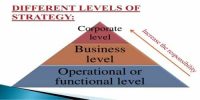Key Success Factors in E-commerce
Electronic commerce, commonly known as E-commerce or e-commerce, is trading in products or services using computer networks, such as the Internet. Electronic commerce draws on technologies such as mobile commerce, electronic funds transfer, supply chain management, Internet marketing, online transaction processing, electronic data interchange (EDI), inventory management systems, and automated data collection systems.
Several factors have a role in the success of any e-commerce venture. They may include:
(1) Providing value to customers. Vendors can achieve this by offering a product or product-line that attracts potential customers at a competitive price, as in non-electronic commerce.
(2) Providing service and performance. Offering a responsive, user-friendly purchasing experience, just like a flesh-and-blood retailer, may go some way to achieving these goals.
(3) Providing an attractive website. The tasteful use of color, graphics, animation, photographs, fonts, and white-space percentage may aid success in this respect.
(4) Providing an incentive for customers to buy and to return. Sales promotions to this end can involve coupons, special offers, and discounts. Cross-linked websites and advertising affiliate programs can also help.
(5) Providing personal attention. Personalized websites, purchase suggestions, and personalized special offers may go some of the ways to substituting for the face-to-face human interaction found at a traditional point of sale.
(6) Providing a sense of community. Chat rooms, discussion boards, soliciting customer input, loyalty schemes, and affinity programs can help in this respect.
(7) Providing reliability and security. Parallel servers, hardware redundancy, fail-safe technology, information encryption, and firewalls can enhance this requirement.
(8) Providing a 360-degree view of the customer relationship, defined as ensuring that all employees, suppliers, and partners have a complete view, and the same view, of the customer. However, customers may not appreciate the big brother experience.
(9) Owning the customer’s total experience. E-tailers foster this by treating any contacts with a customer as part of a total experience, an experience that becomes synonymous with the brand.
(10) Streamlining business processes, possibly through re-engineering and information technologies.
(11) Letting customers help themselves. Provision of a self-serve site, easy to use without assistance, can help in this respect.
(12) Helping customers do their job of consuming. E-tailers can provide such help through ample comparative information and good search facilities. Provision of component information and safety-and-health comments may assist e-tailers to define the customers’ job.















